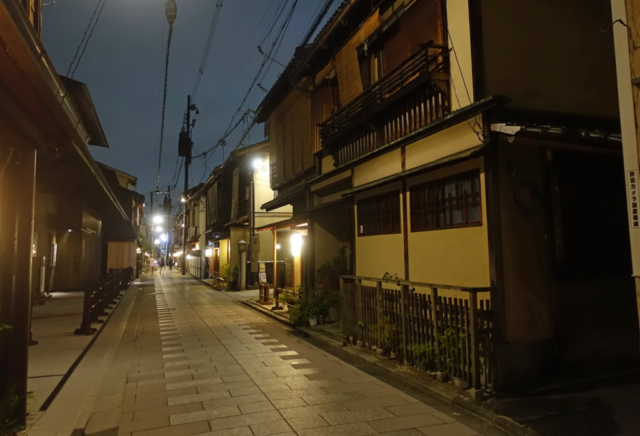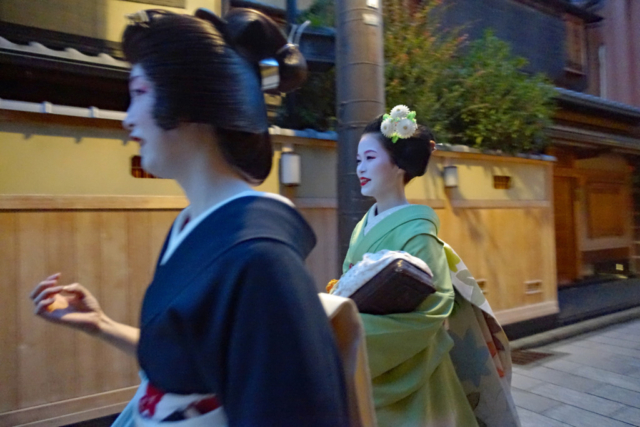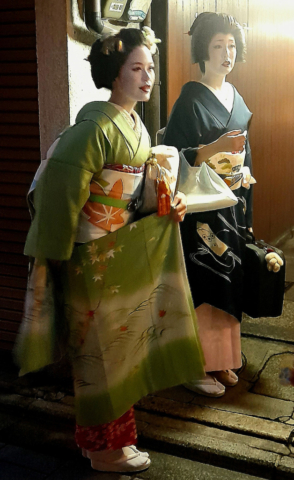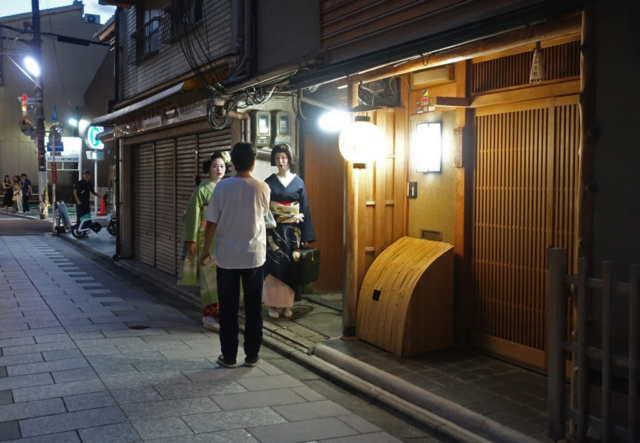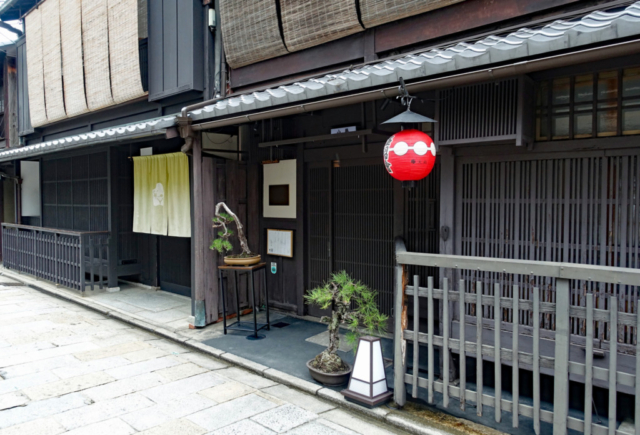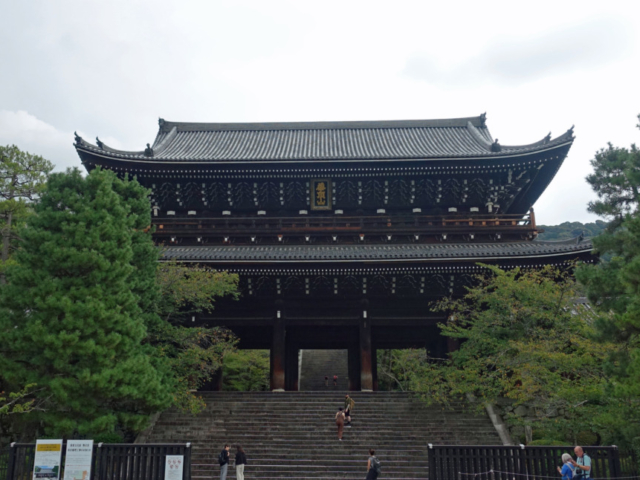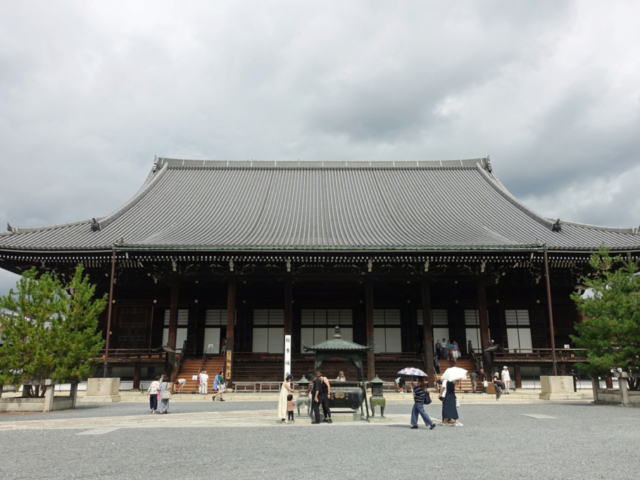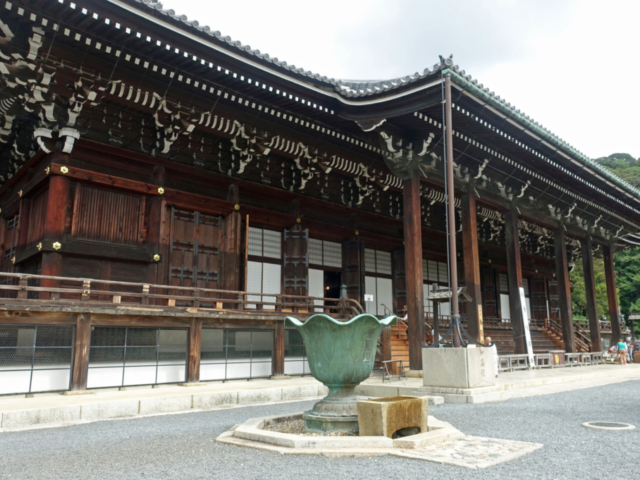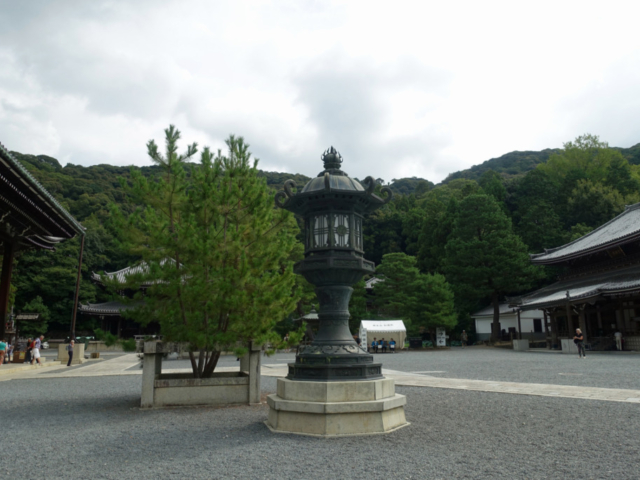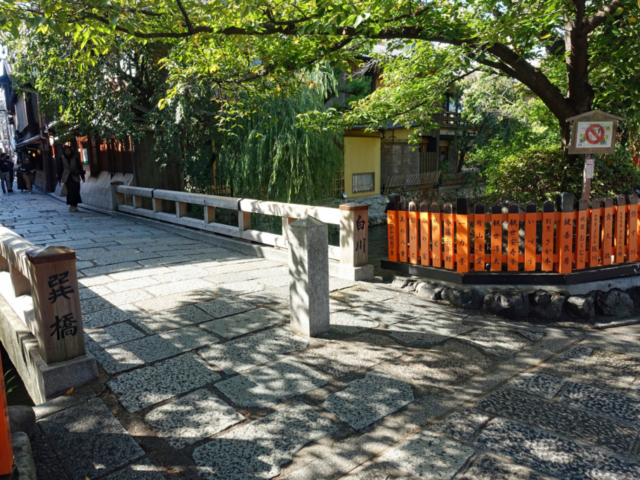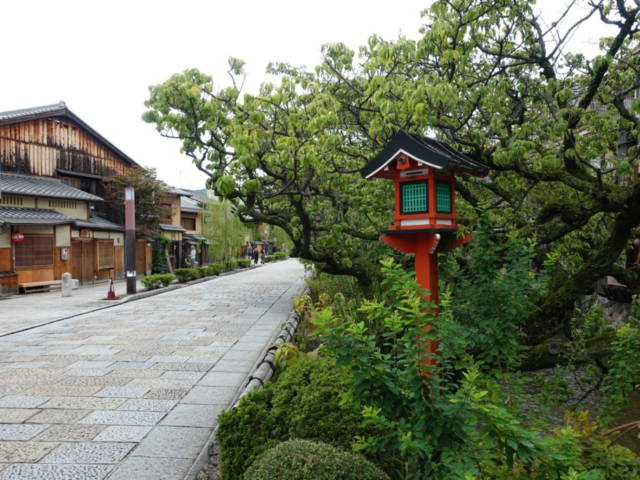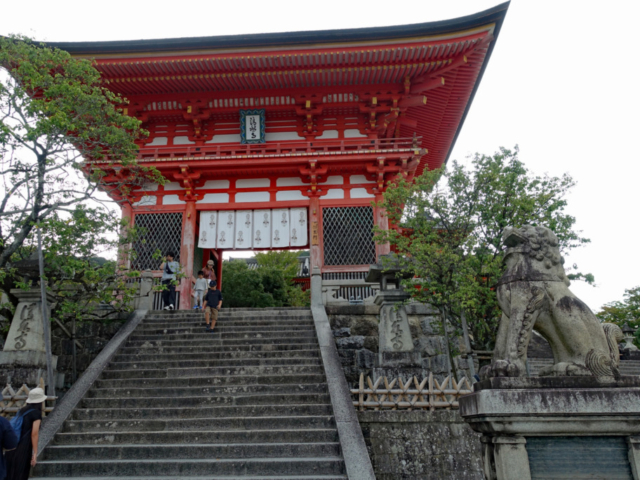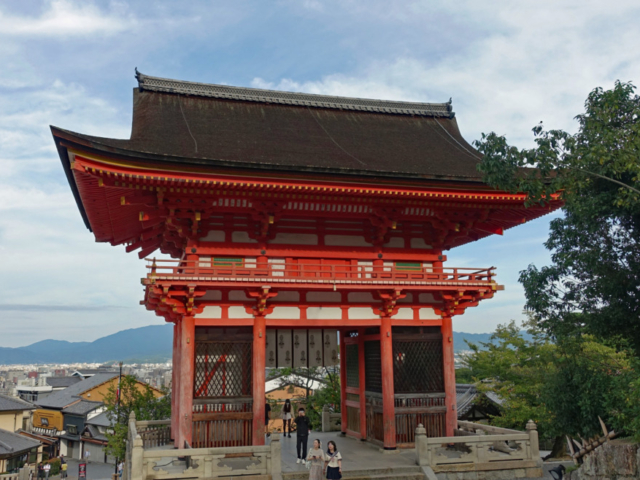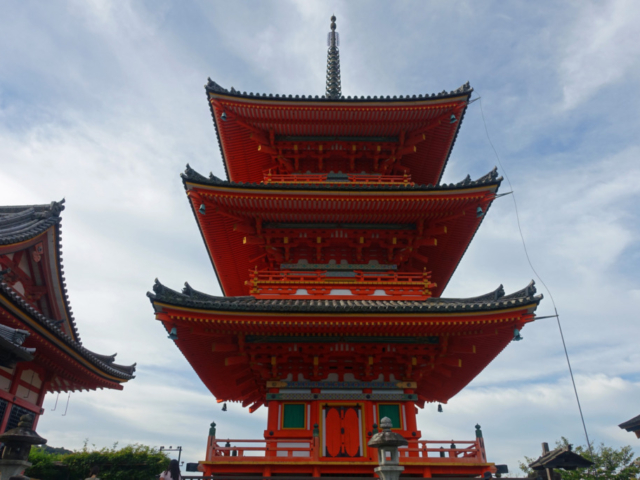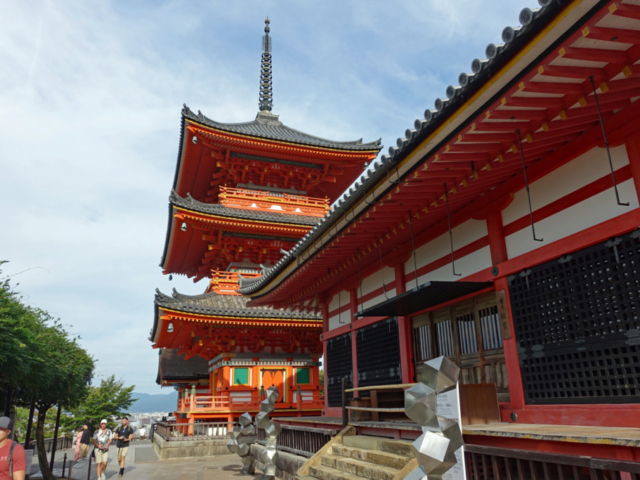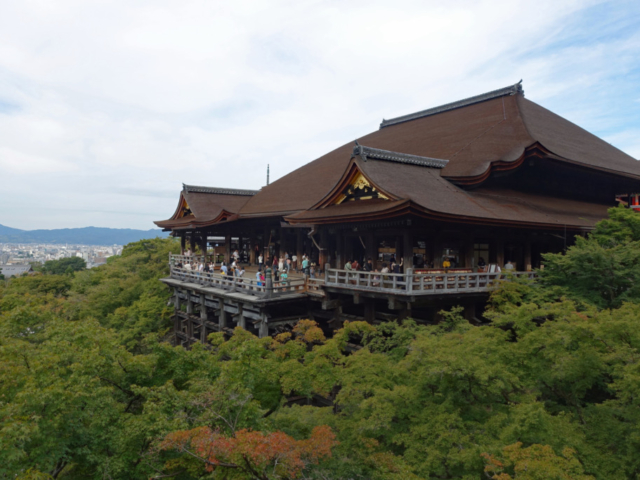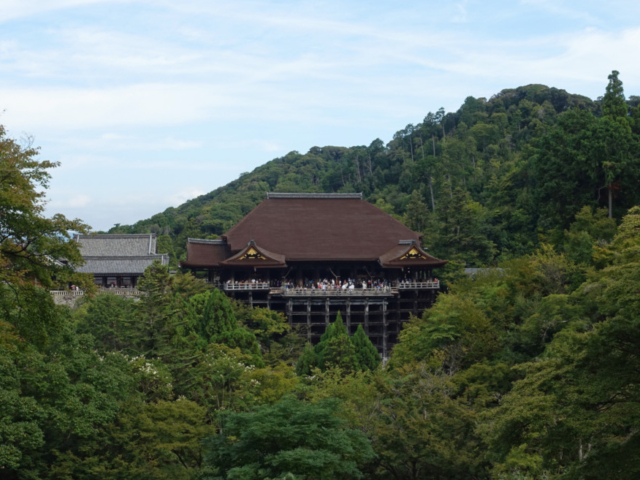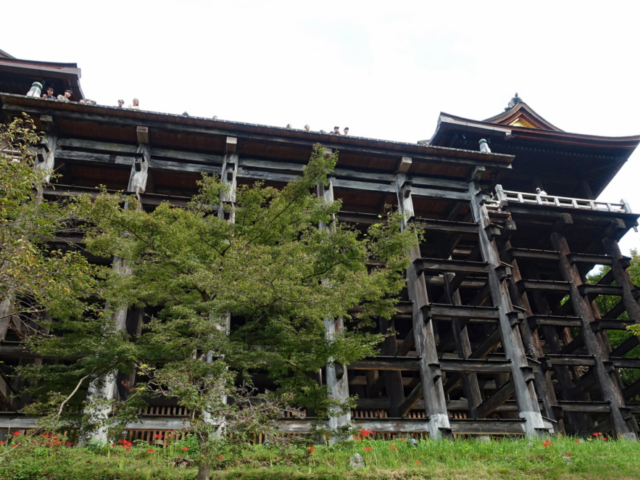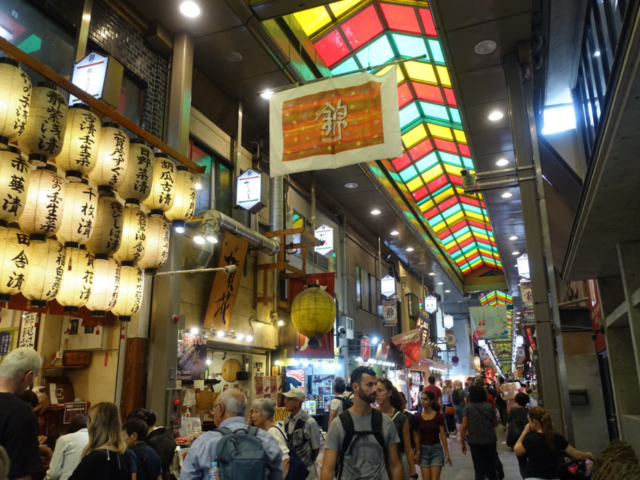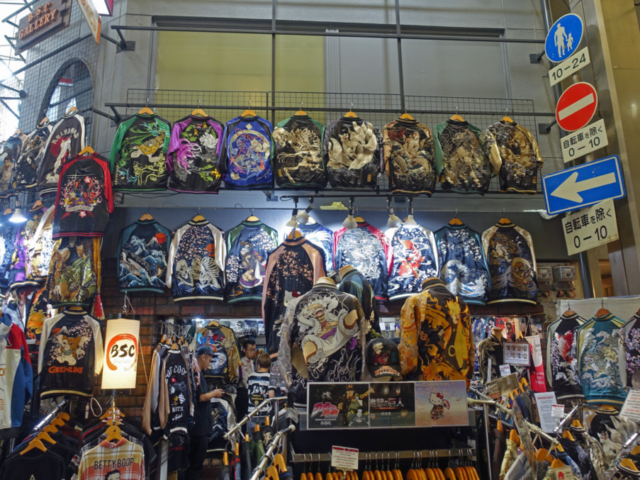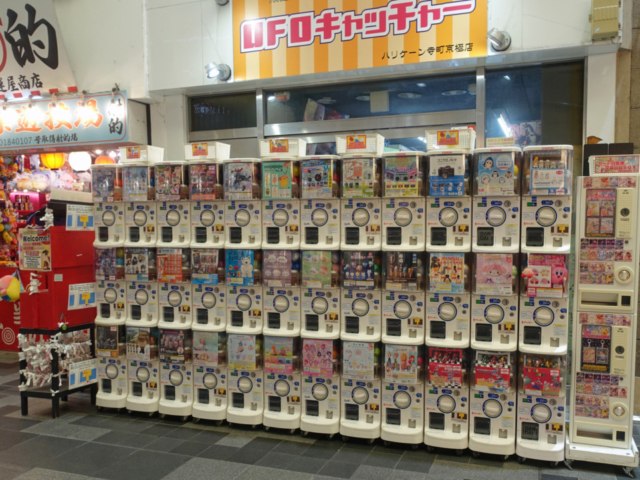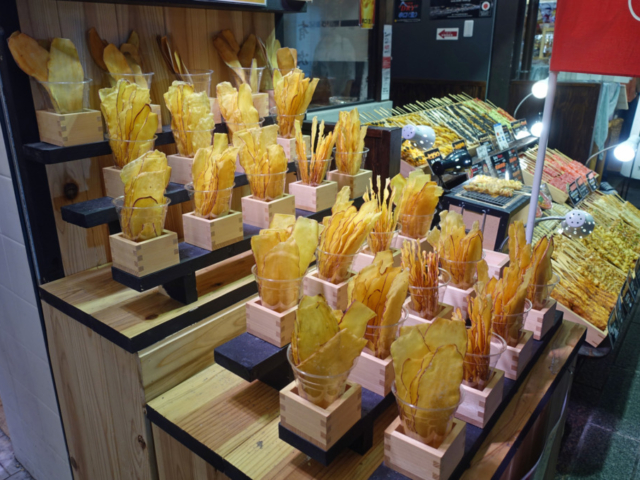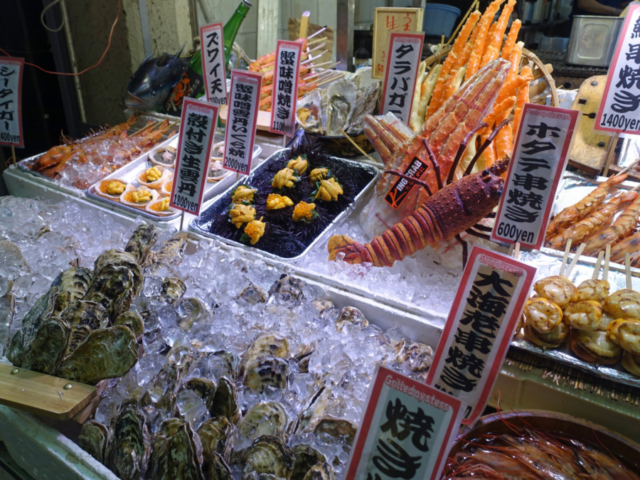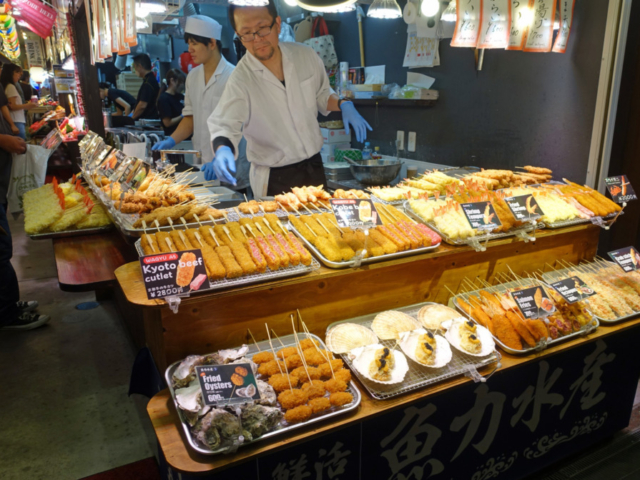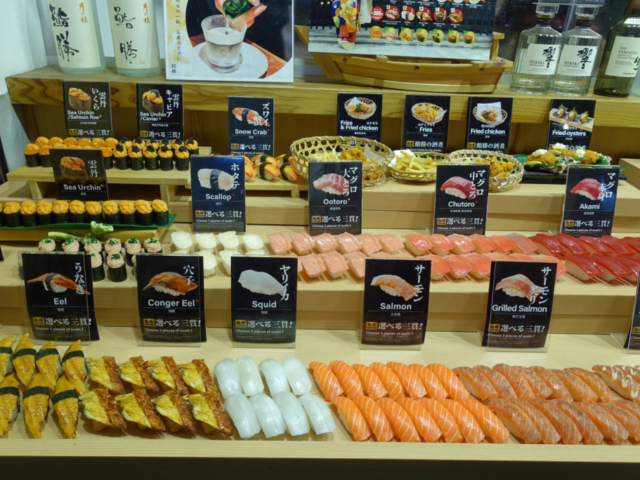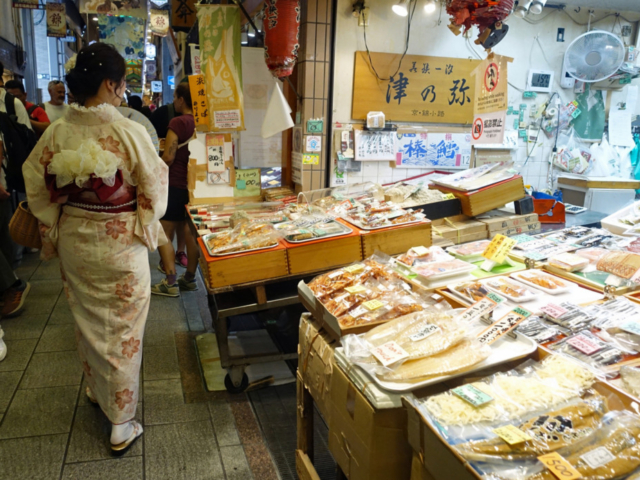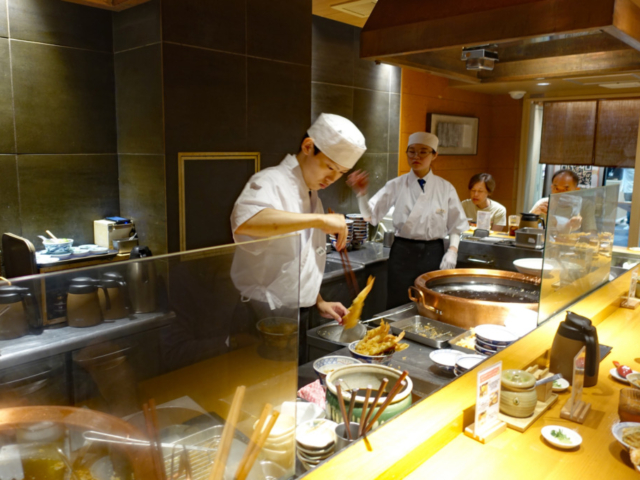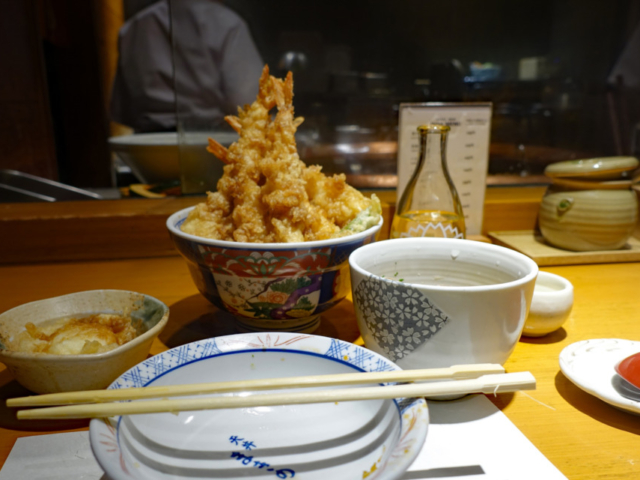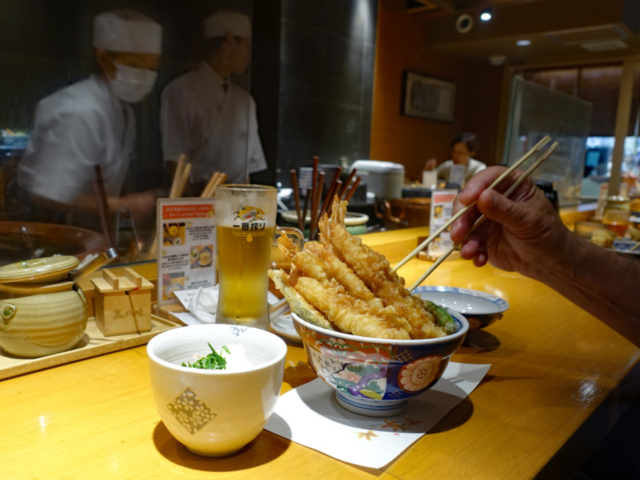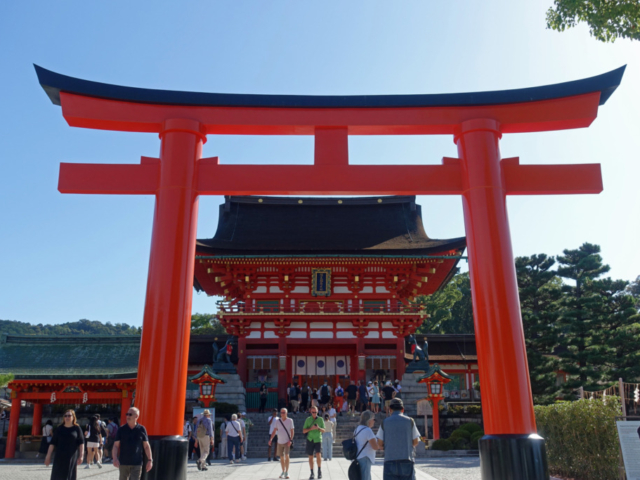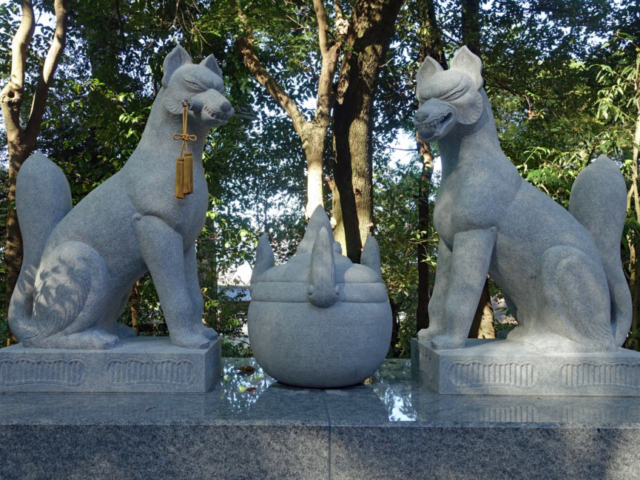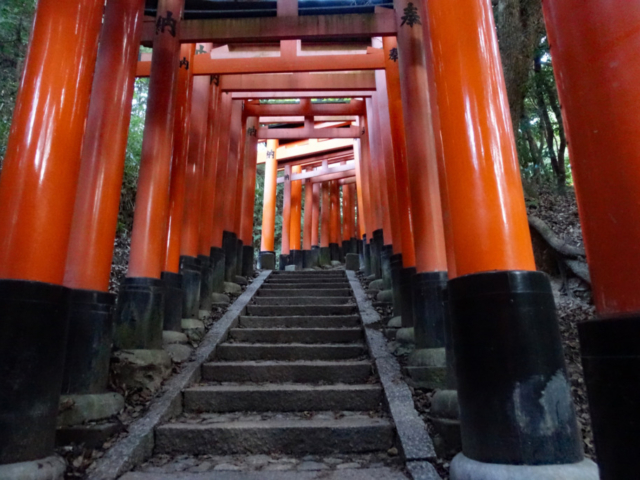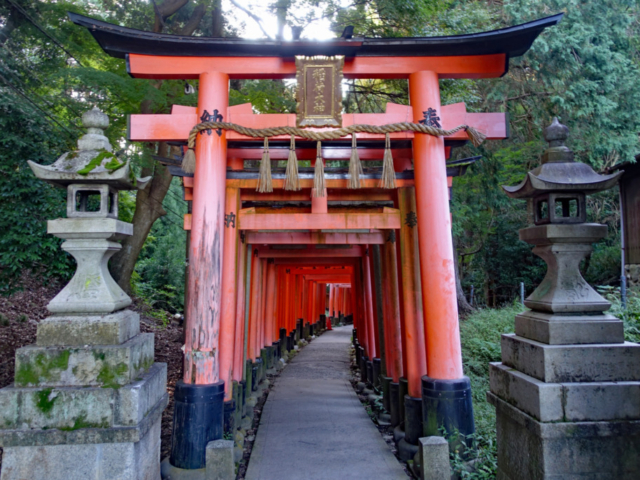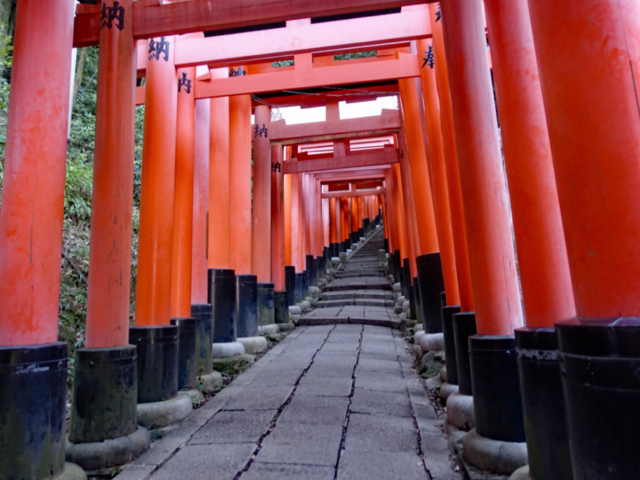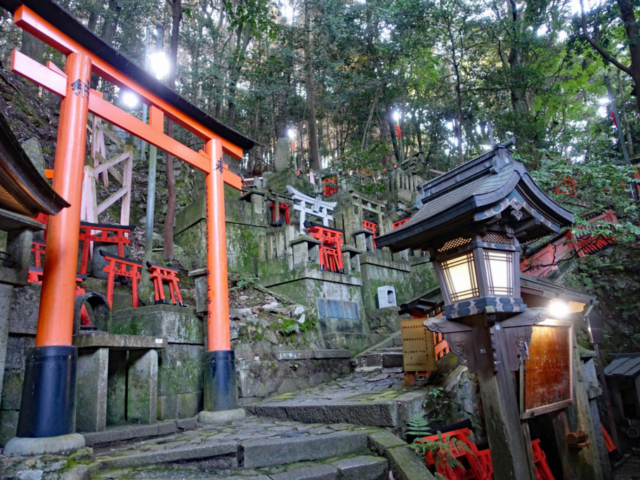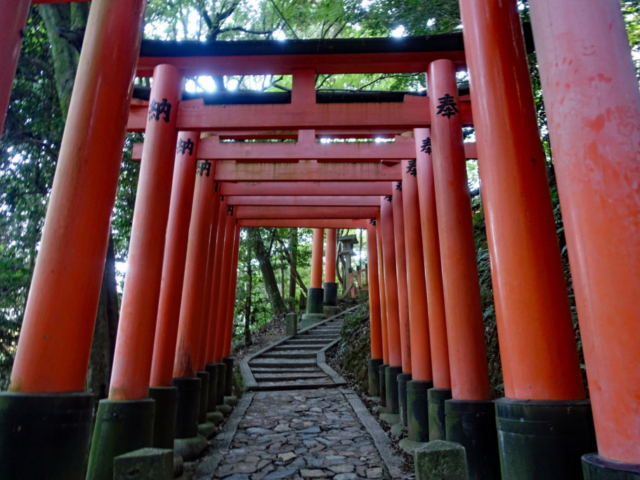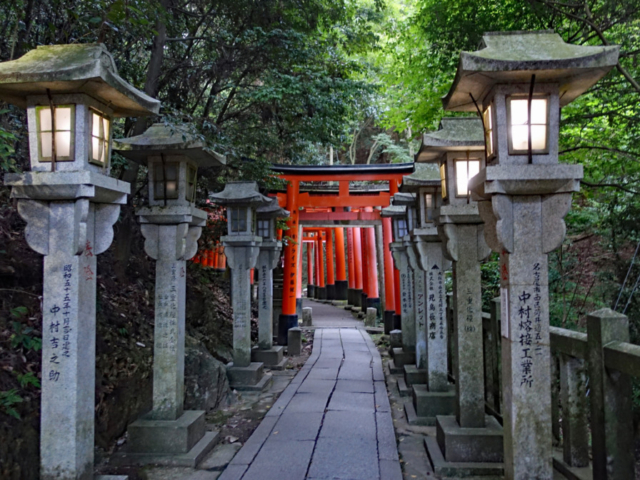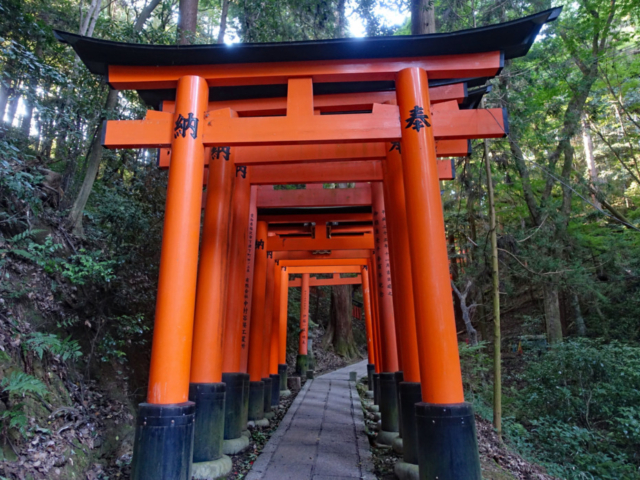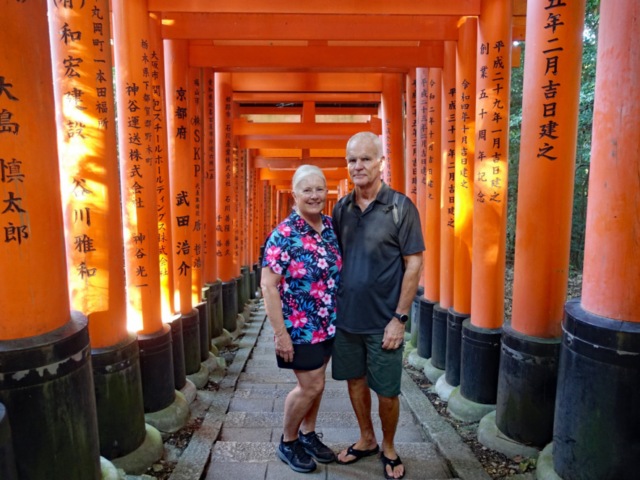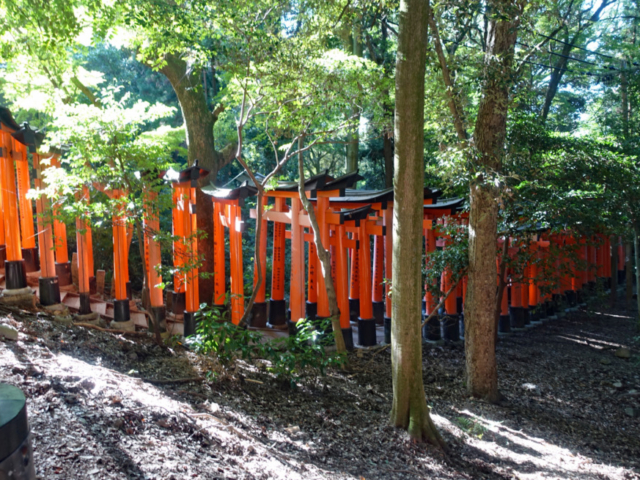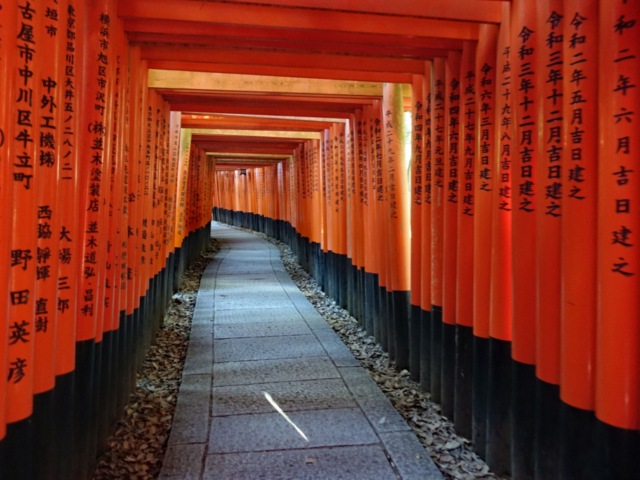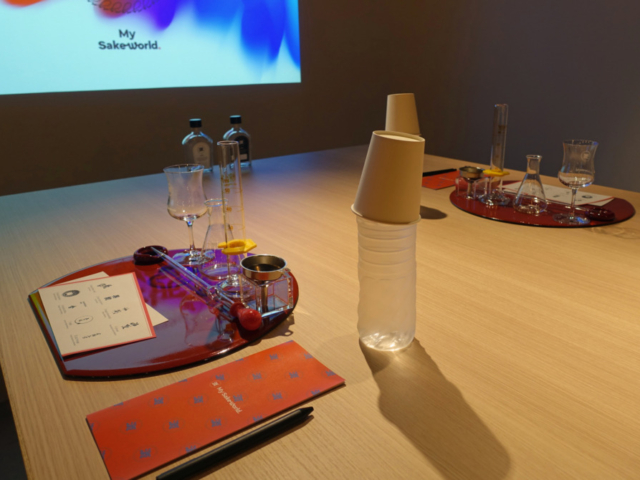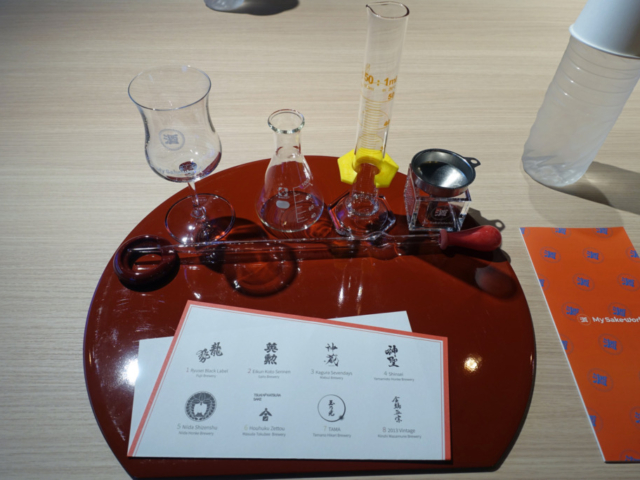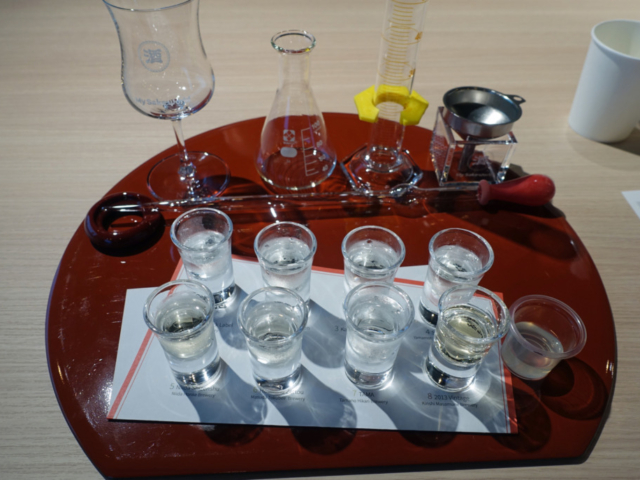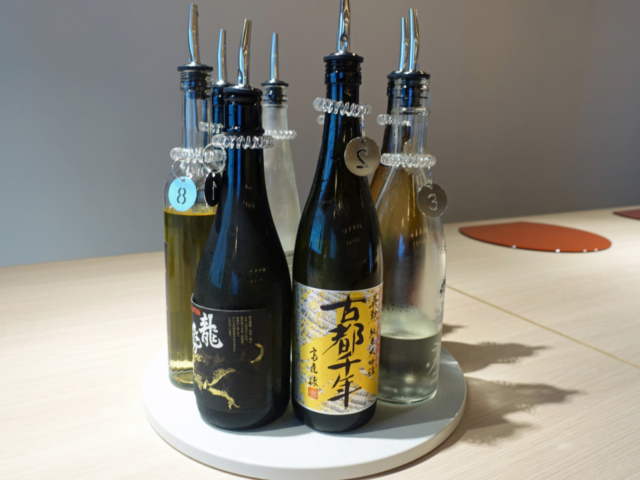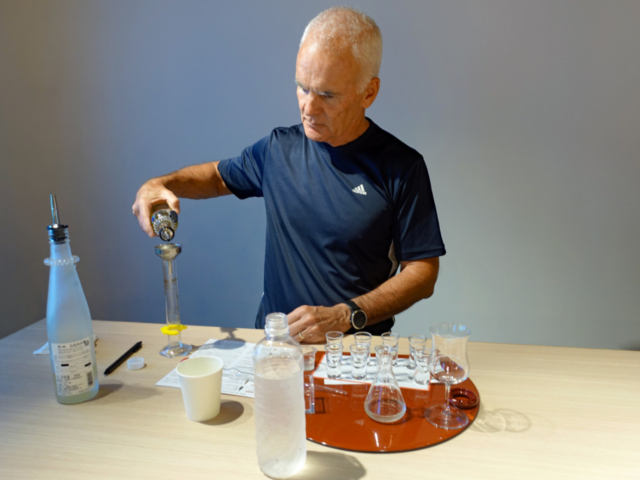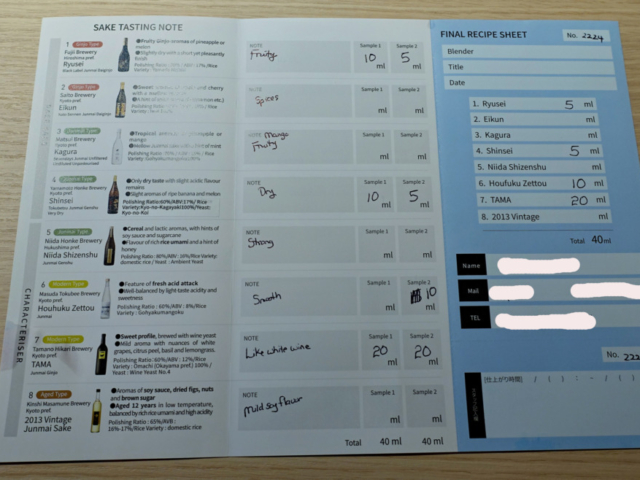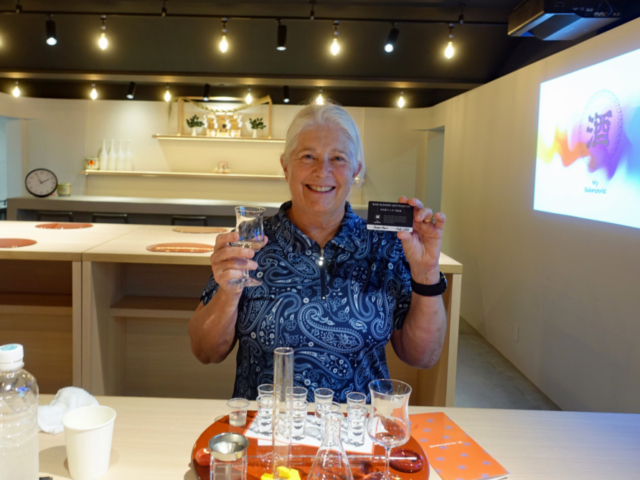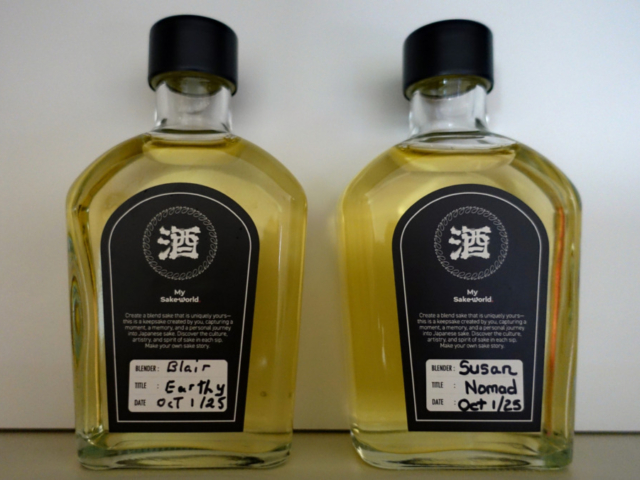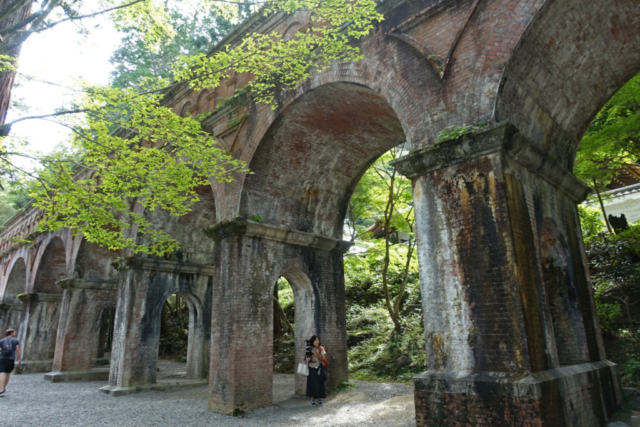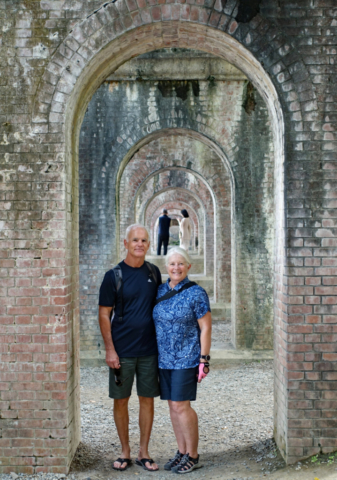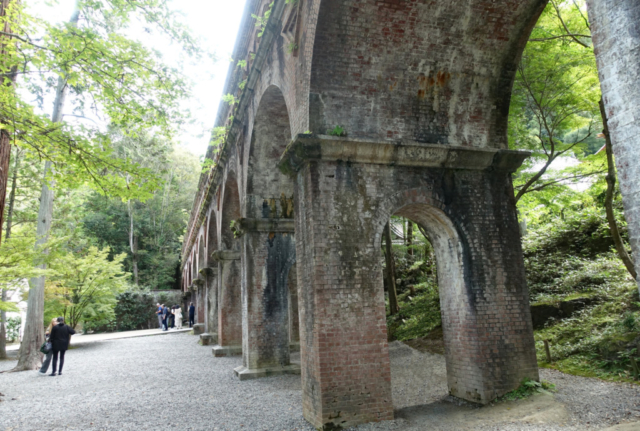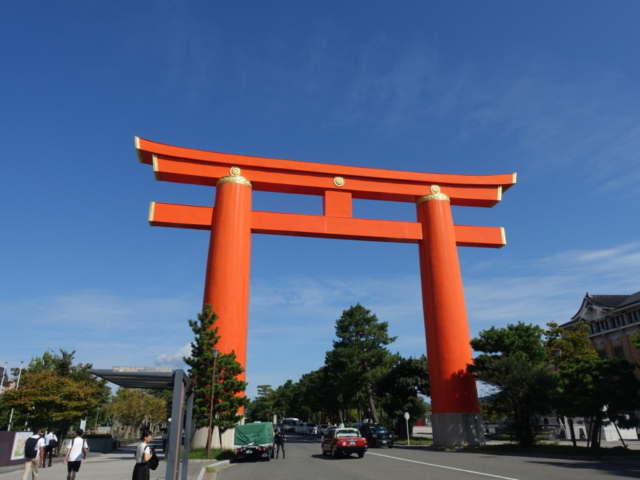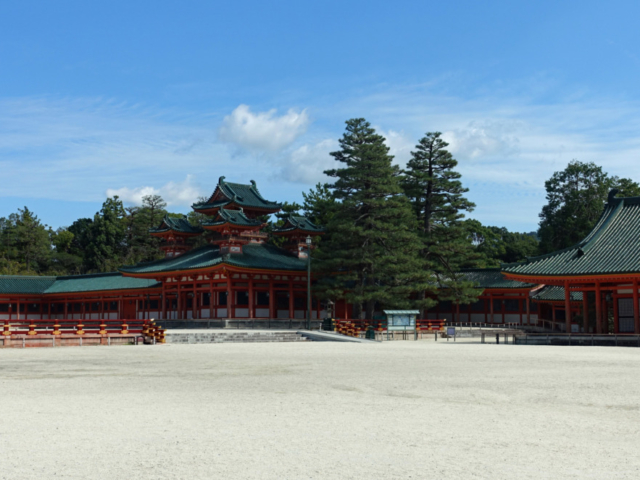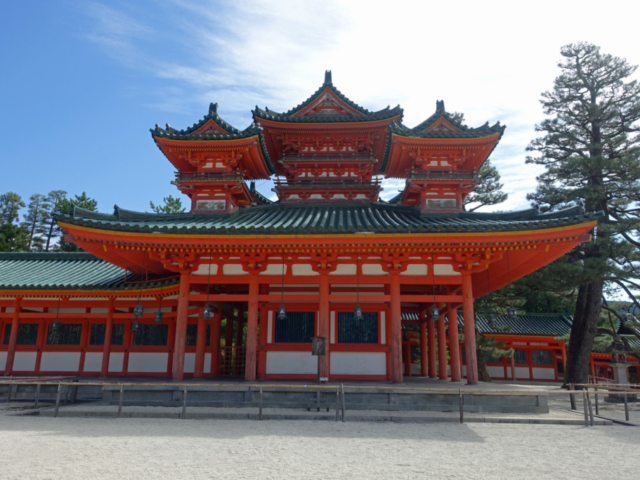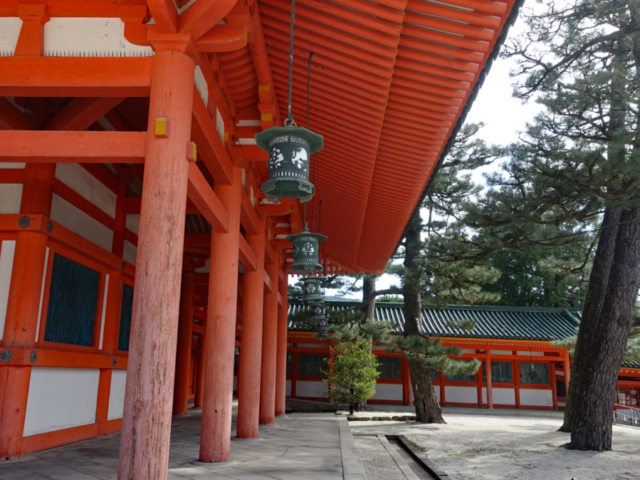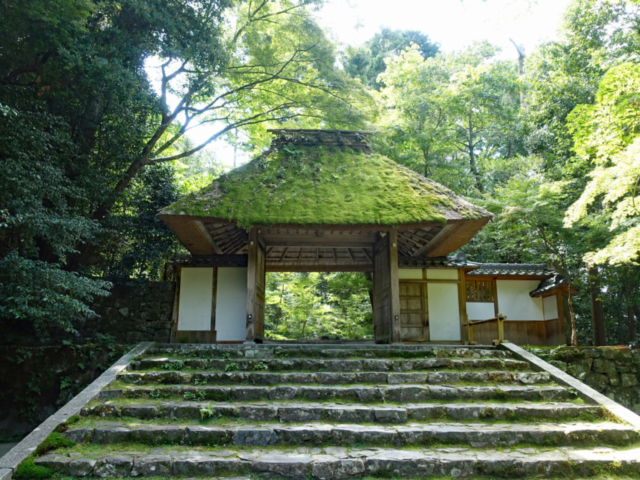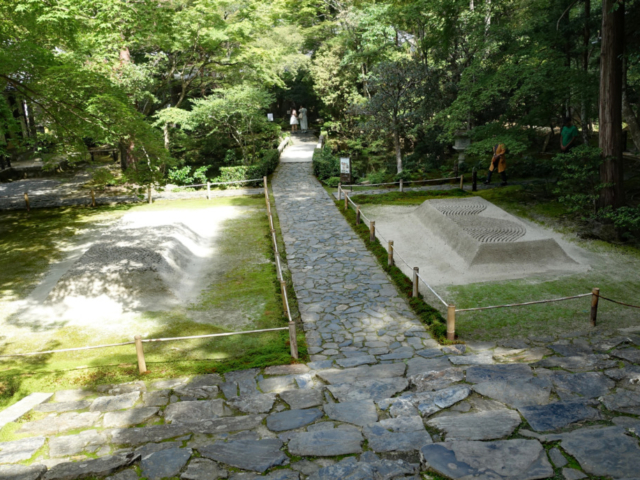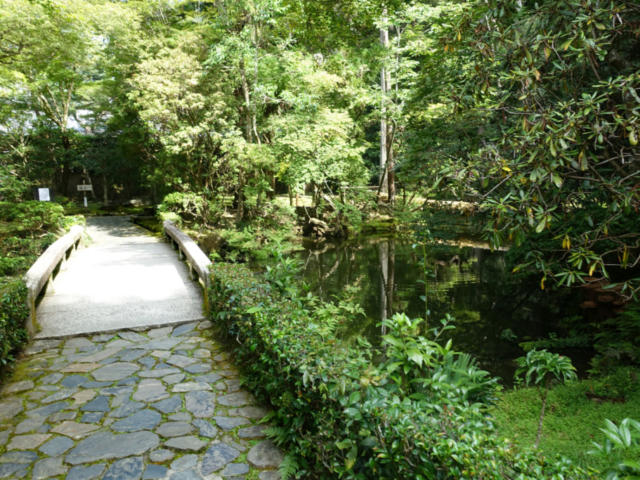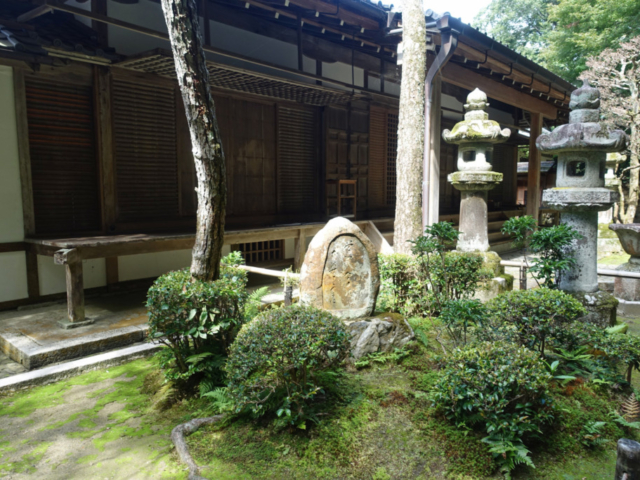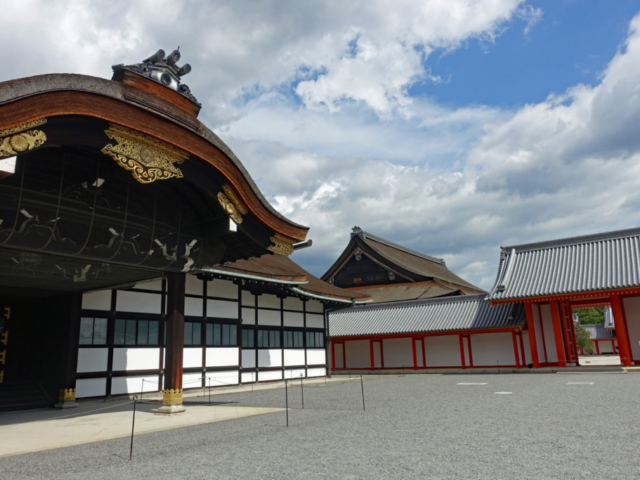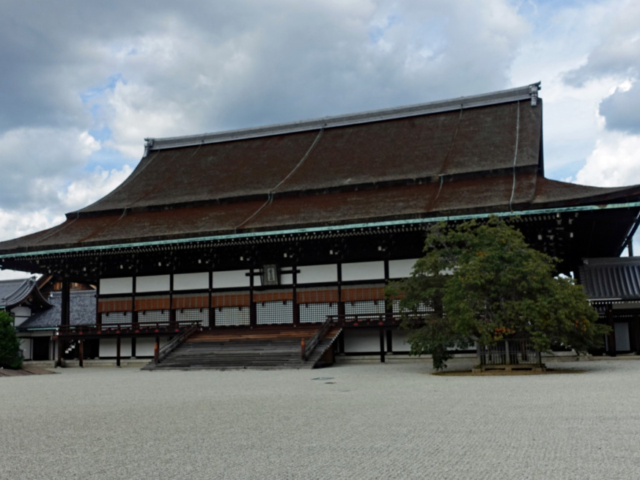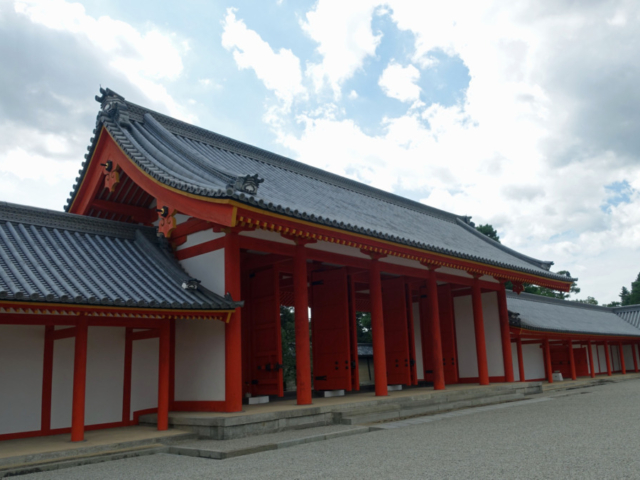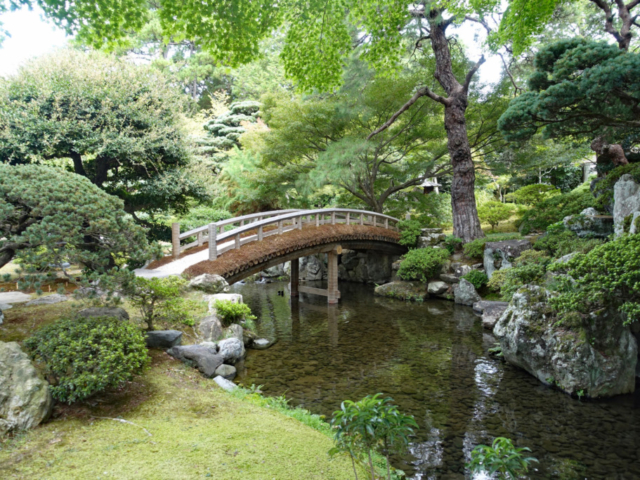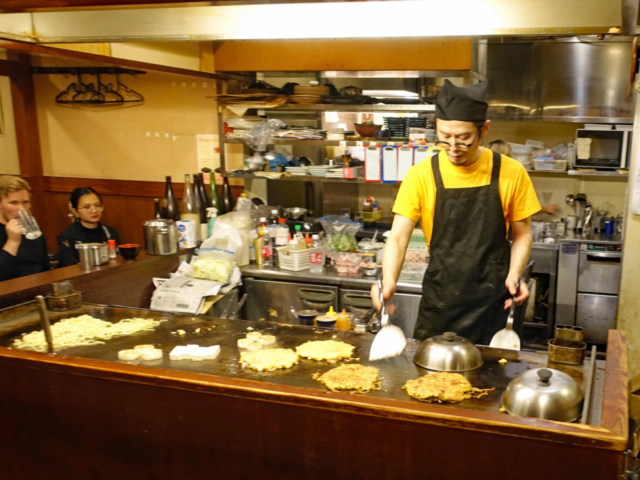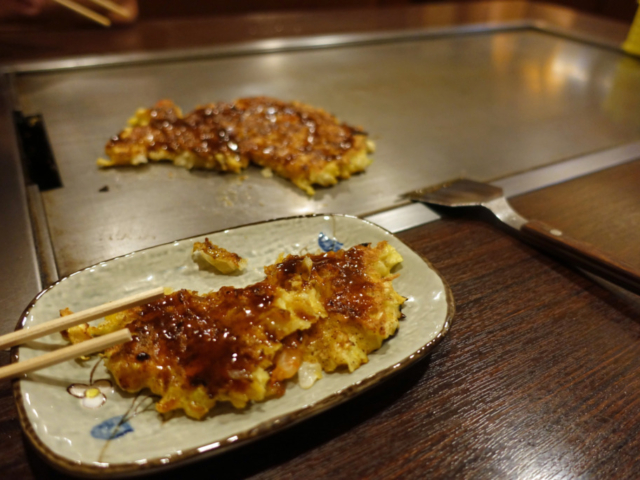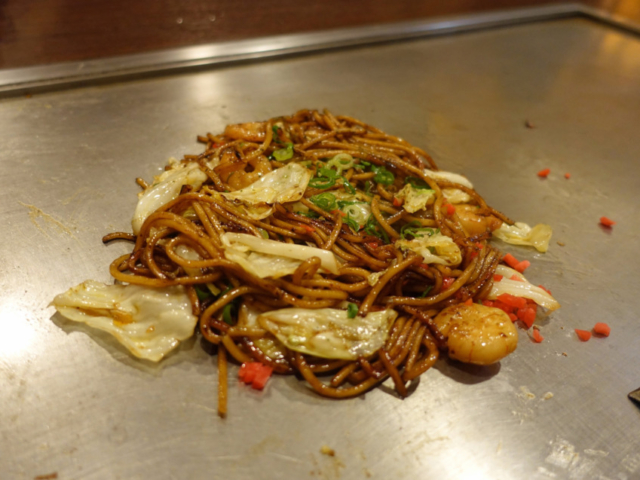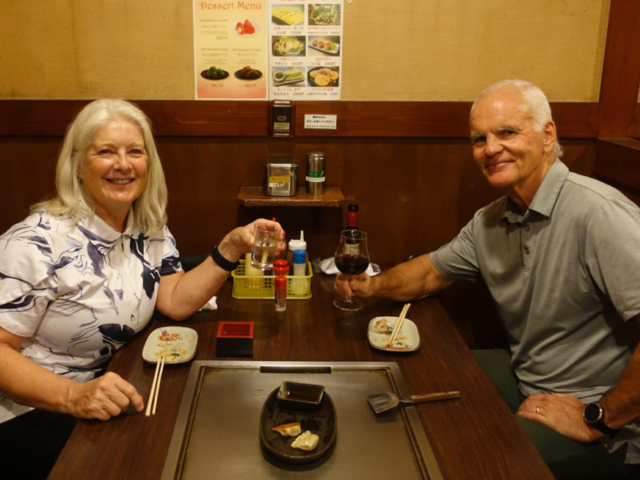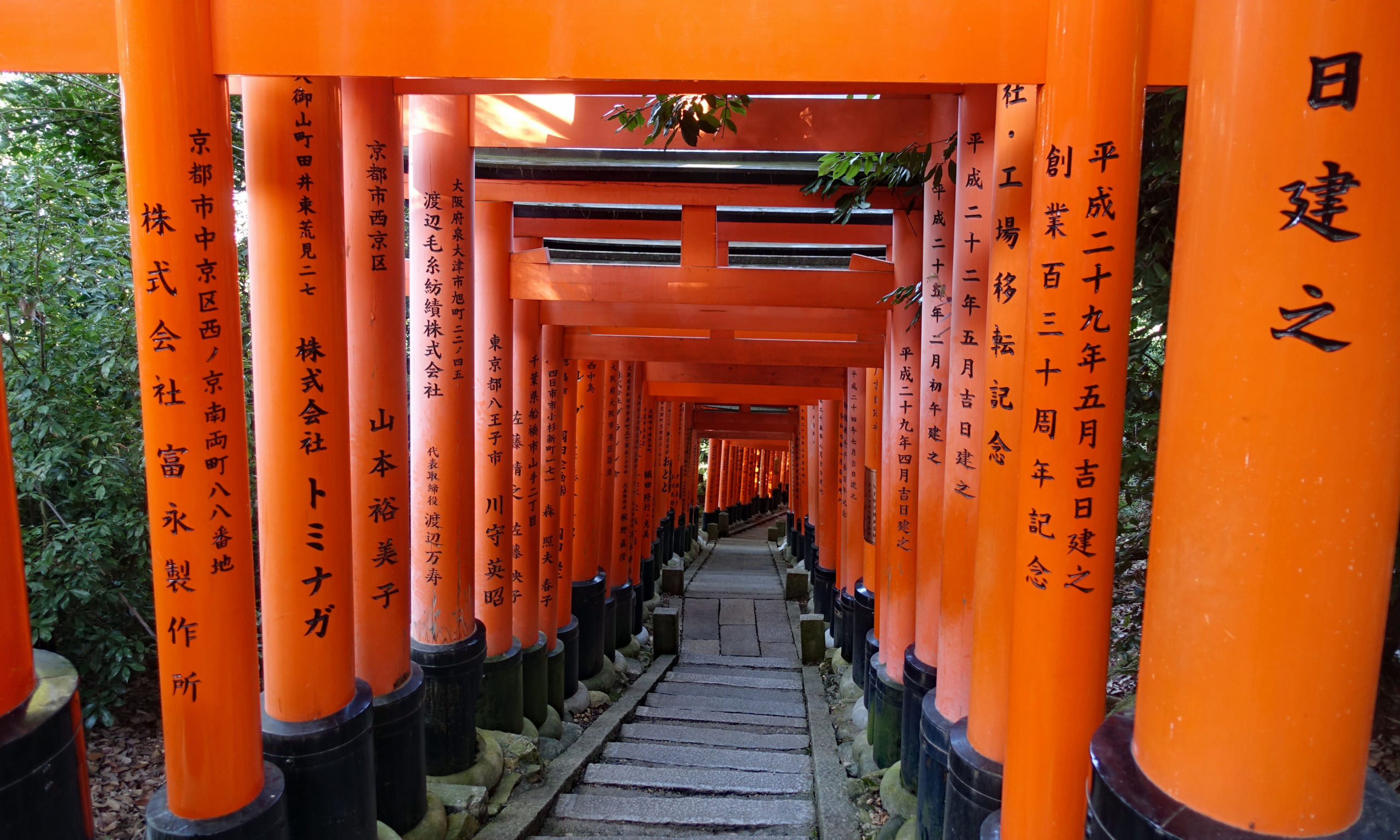
Nestled amid rolling hills, Kyoto is a testament to Japan’s rich history and timeless beauty. With a population of roughly 1.5 million its one of the oldest municipalities in Japan, chosen in 794 to be the seat of Japan’s imperial court by Emperor Kanmu. The city was spared from large-scale destruction during WWII and as a result, its beautiful cultural heritage has mostly been preserved. Often called the “City of Ten Thousand Shrines” Kyoto has over 1,600 Buddhist temples and more than 400 Shinto shrines, some of which have been designated as UNESCO World Heritage Sites. Because of this, Kyoto is considered the spiritual and cultural capital of Japan and is a major tourist destination.
We arrived in Kyoto from Tokyo on the bullet train 🚄 This was our second ride on these super fast trains, and it was just as much fun as last year. Leaving Tokyo we were fortunate to have a brief glimpse of Mount Fuji off in the distance, but its impossible to get a decent photo on such a fast moving train.
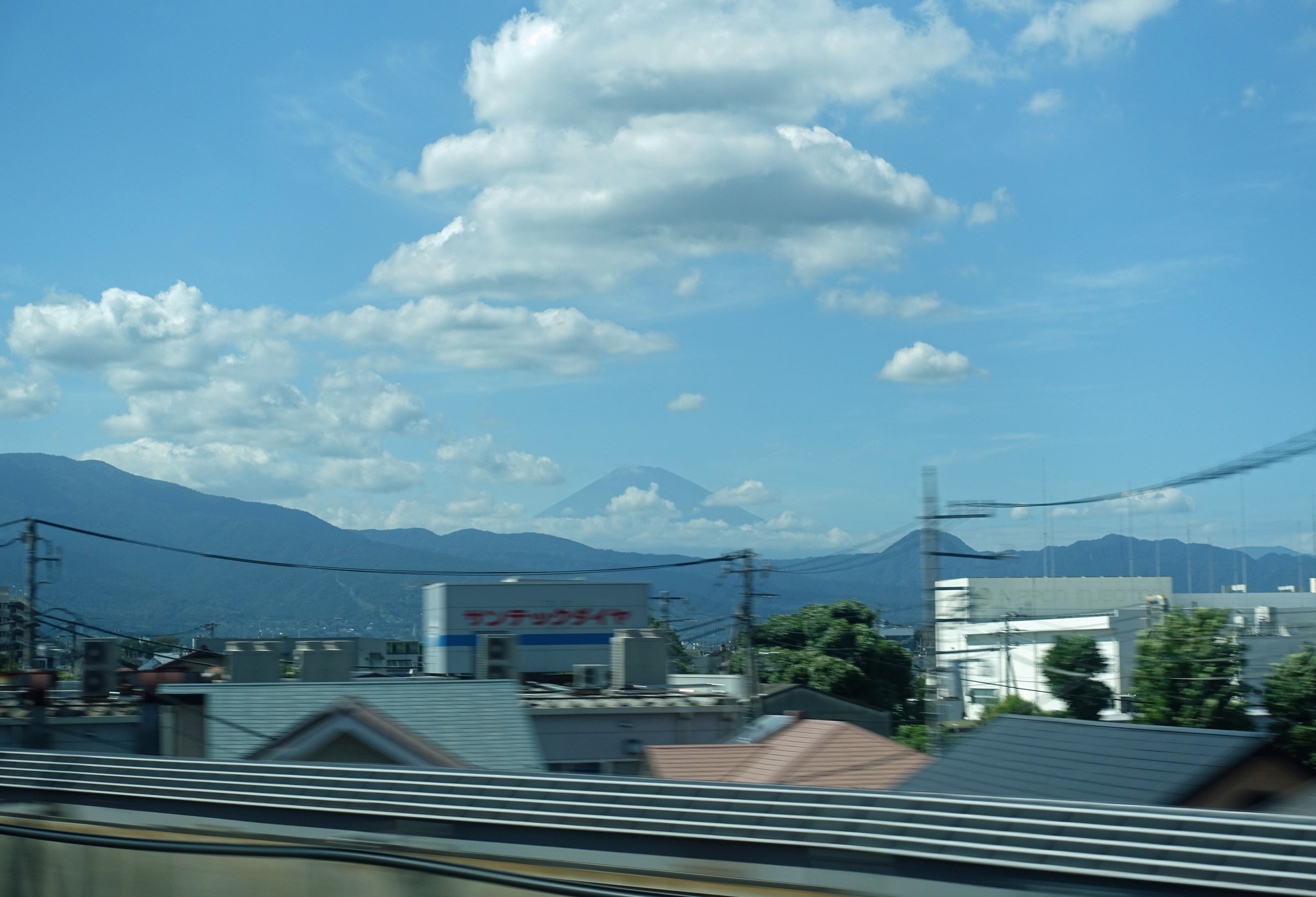
2 hours and 15 minutes later we pulled into Kyoto Station and grabbed a taxi to the apartment where our lovely host Sumi was at the door to greet us. She spent quite a while with us explaining how everything in the apartment worked, showed us the rooftop patio and provided us with a huge amount of info regarding places to see and eat. We really appreciate it when a host takes the time to meet us and show us around their property.
We are staying in the Gion district of Kyoto, famous for the Geisha’s that work in the area. As we strolled through this historic district, especially at dusk, it felt like stepping back in time. Gorgeous machiya houses (traditional wooden townhouses) line the narrow streets and if you are lucky, you might spot a geisha or maiko (apprentice geisha) gracefully making her way to an engagement.
Shortly after our arrival in Kyoto we signed up for a 2 hour free walking tour of the Gion district, where the traditional houses capture the essence of Kyoto’s old-world charm. From there we walked to the Yasaka Shrine, founded over 1350 years ago and one of the most famous shrines in Kyoto. (shrines are Shinto and typically painted red, temples are Buddhist and typically dark wood)
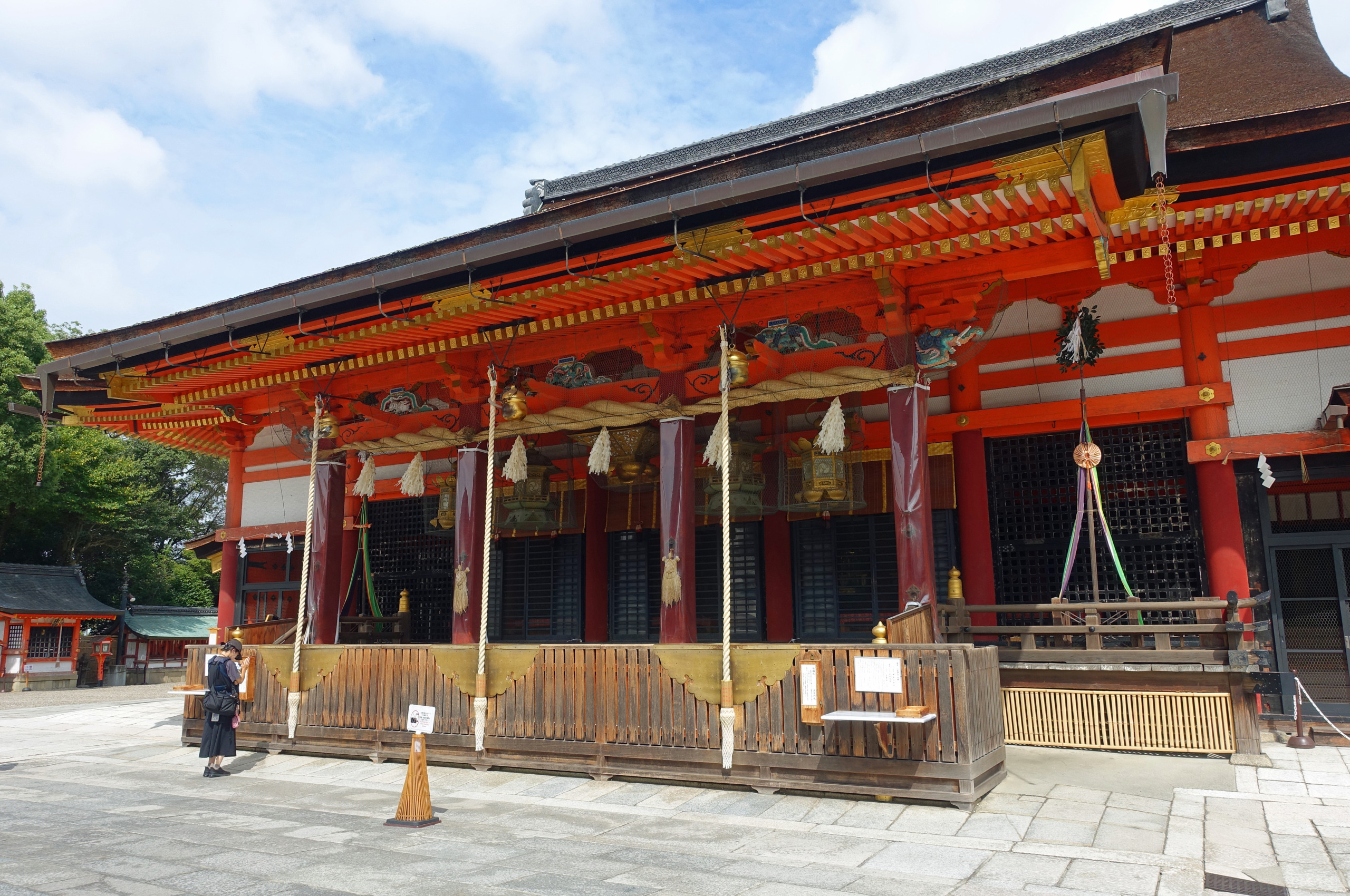
Leaving Yasaka Shrine our next stop was Chionin Temple, the head temple of the Jodo sect of Japanese Buddhism. Entrance to the temple is through a massive gate, standing 24 meters tall and 50 meters wide, it is the largest wooden temple gate in Japan and dates back to the early 1600’s.
Our final stop on the walking tour was the Yamato-bashi bridge, a charming stone bridge valued for its picturesque scenery and wooden machiya houses lining the canal.
Many of Kyoto’s temples and shrines are within a 15 minute walk of our apartment. We left the apartment at 7 am one day bound for the UNESCO listed Kiyomizu-dera Temple, spanning 130,000 square meters on the slopes of Mount Otowa and home to over 30 buildings. The temple was founded in 778 and has suffered many fires so most of the current buildings were rebuilt in 1633. Interestingly, this temple is a blend of Buddhism and Shinto which for centuries in Japan were not seen as separate religions but as two aspects of the same spiritual truth. For this reason you will find both vermilion colored shrines and dark wood temples here.
Entrance to the grounds is through a striking two story gate dating back to 1500. Up the steps from the gate is the Kiyomizu-dera Sanjunoto pagoda, one of the largest three storied pagodas in Japan at approx 31 meters tall. Vermilion red laquer is a color traditionally used in Japanese religious architecture to ward off evil. The first pagoda on this site was built in 847 AD and destroyed by frequent fires with the current building a reconstruction dating to 1633.
Kiyomizu-dera is best known for its wooden stage that juts out from the main hall, 13 meters above the hillside. Built on the steep cliffs of Mount Otowa, the stage affords nice views of the numerous cherry and maple trees below that erupt in a sea of color in spring and fall, as well as of the city of Kyoto in the distance. The main hall, which together with the stage, was built without the use of nails crafted from zelkova trees over 400 years old. Numerous crossbars run vertically and horizontally through the pillars, jointing the 18 pillars without a single nail. This current stage was rebuilt in 1633.
Across a valley from the stage is the Koyasu Pagoda, said to have been a place of prayer for Emperor Shomu and Empress Komyo. The current pagoda was rebuilt in 1500, dedicated to the goddess of safe childbirth where visitors pray for an easy and safe delivery of their children.
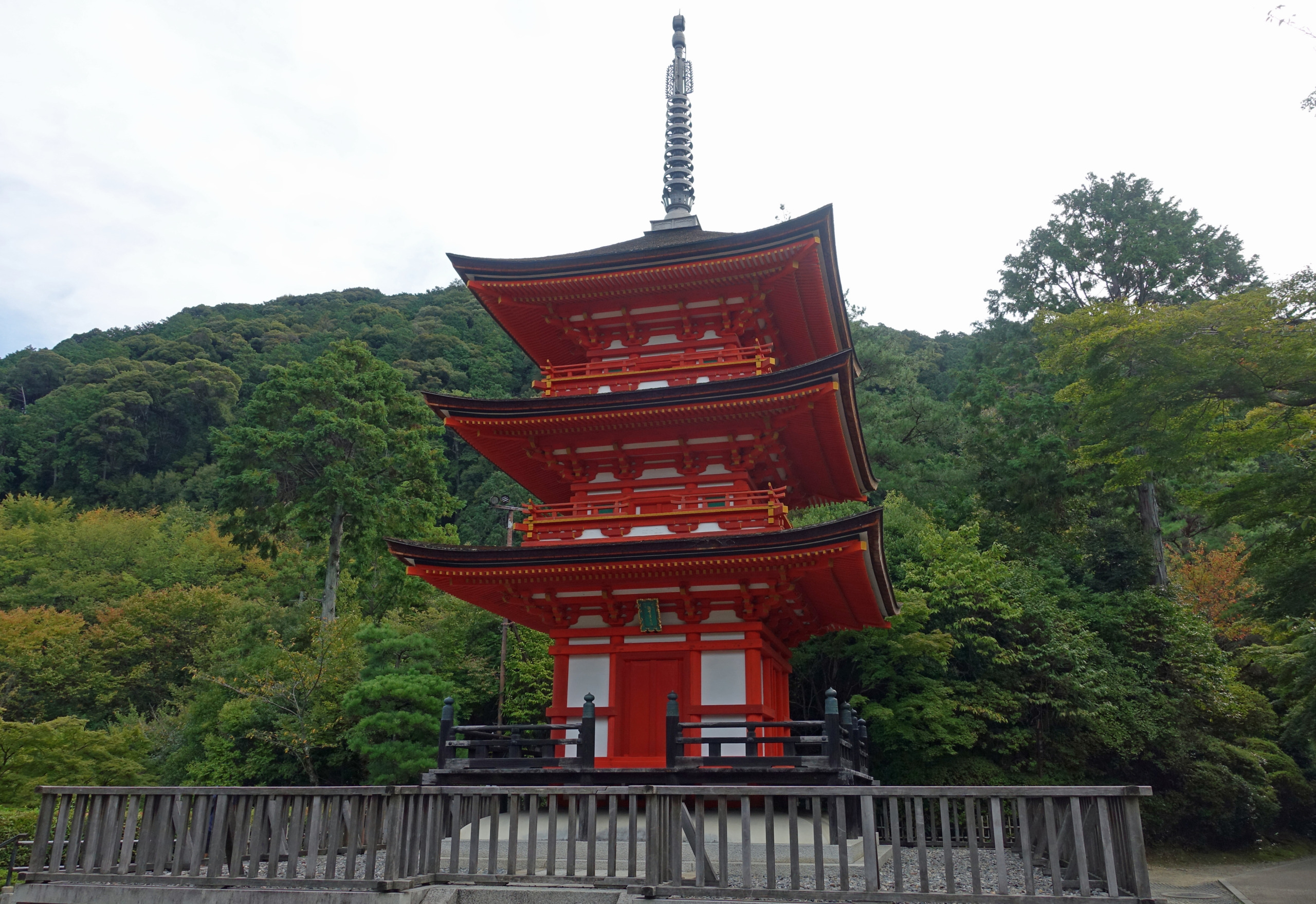
The Nishiki Market is a 400 year old covered food market lined with more than one hundred shops and restaurants. Known as “Kyoto’s Kitchen” this lively market specializes in all things food related, like fresh seafood, produce, knives, cookware, dried seafood and sushi. Branching off from the food market is Shinkyogoku street, filled with souvenirs of every description, and Teramachi street, filled with art galleries, bookshops, clothing shops and restaurants. Exploring this area is a great way to spend a few hours in Kyoto.
On Teramachi street we found the restaurant Tendon Makino Kyoto, serving up some fantastic tempura. We sat at the bar and enjoyed watching the cooks preparing the dishes. Our meal consisted of a tempura egg, a cold soba noodle salad and 5 massive tempura shrimp on a bed of rice. Yummy!!!!
Fushimi Inari Shrine, established in 711 AD, is an important Shinto shrine in southern Kyoto and was the most anticipated place we visited during our time in Kyoto. Its well known for the thousands of vermillion laquered torii gates which straddle a network of trails behind the shrine’s main buildings. The trails lead into a wooded forest on the sacred Mount Inari, which stands at 233 meters and belongs to the shrine grounds. Fushimi Inari is the most important of several thousand shrines dedicated to Inari, the Shinto god of rice. Foxes are thought to be Inari’s messengers, resulting in many fox statues across the shrine grounds. At the back of the shrine’s main grounds is the entrance to the torii gate covered hiking trail. These beautiful vermillion colored gates along the entire trail are donations by individuals and companies, you will find the donator’s name and date of donation inscribed on the back of each gate. The donation amount starts around 400,000 Yen (USD $2,740) for a smaller gate and can be over one million Yen (USD $6,850) for a large gate. Along the trail there are many small shrines with stacks of miniature torii gates that were donated by visitors with smaller budgets. The hike to the summit and back took us around 90 minutes at a leisurely pace. The Fushimi Inari Shrine is such a popular tourist destination in Kyoto that the crowds can really spoil the visit so to have the best experience possible we left the apartment at 6:15am to get ahead of the masses. It worked and we had a magical, serene experience walking up and around the mountain under the torii gates. This was certainly a highlight for us and worth visiting if you are in Kyoto or Osaka. I took over 200 photos so it was hard to choose my favorites because the entire journey was so special.
We were interested in doing a sake tasting and found a small business that not only offered tastings, but the chance to be a sake blender. MySakeWorld has only been open since June 2025 so when we walked in and asked about a reservation they said they could take us right away, we had a private blending experience! It was not inexpensive at 5,900 Yen (USD $40.50) each but we tasted 8 different styles of sake, created two blends each, and came home with a 200ml bottle each of our personal blend. I named my blend Nomad and Blair named his Earthy. Absolutely fun afternoon!!!
We signed up for a 4 hour e-bike tour of Kyoto to visit some sites beyond walking distance from our apartment. Our guide, Ben, was funny, informative and extremely safety conscious during our navigation around the streets of Kyoto. We recommend this company! The tour cost USD $84 each and the bikes were comfortable and easy to use. Our tour began with a brief visit to the Gion district before heading to the Nanzenji Temple, one of the most important Buddhist Zen temples in all of Japan. Entrance to the grounds is through Nanzenji’s massive wooden gate, constructed in 1628 for soldiers who died in the siege of Osaka Castle in 1615.
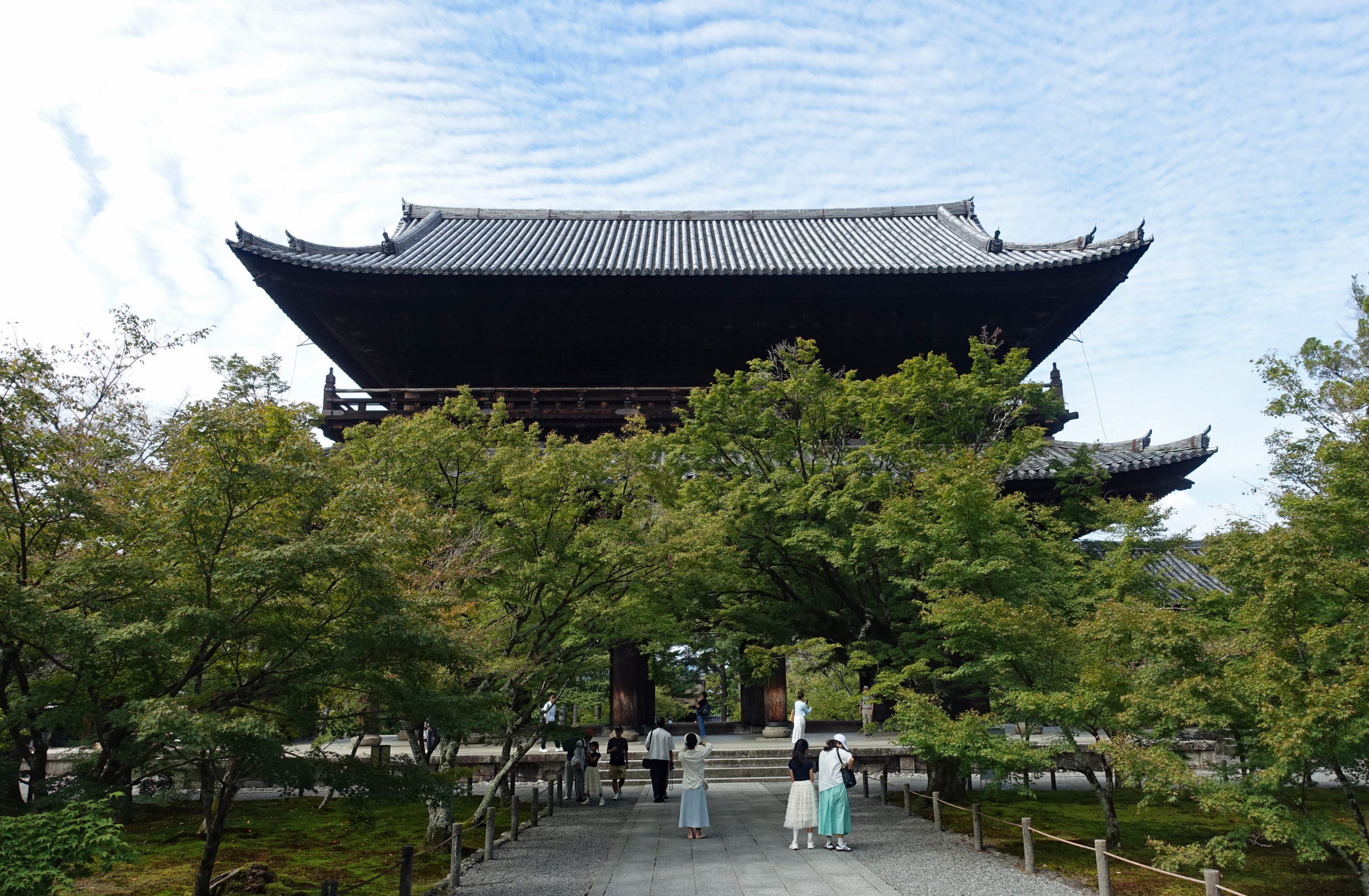
On the grounds of the Nanzenji Temple we came across a rather odd sight, a large Roman looking brick aquaduct that passes through the temple grounds. Built during the Meiji Period (1868-1912) the aquaduct is still functioning and part of a canal system constructed to carry water and goods between Kyoto and Lake Biwa.
The next stop was the Heian Shrine, a relatively new shrine built in 1895 on the 1100th anniversary of the capital’s foundation in Kyoto, dedicated to the spirits of the first and last emperors who reigned from the city. Heian is the former name of Kyoto. A giant torii gate marks the approach to the shrine while the grounds themselves are very spacious with a wide open court at the center. The main buildings are a partial replica of the original Imperial Palace from the Heian Period, but on a smaller scale.
Leaving the shrine we pedaled along the Philosophers Path, a 2 km stone path through the northern part of Kyoto’s Higashiyama district. The path follows a canal which is lined by hundreds of cherry trees, one of the city’s most popular cherry blossom viewing spots. The path got its name due to Nishida Kitaro, one of Japan’s famous philosophers, who was said to practice meditation while walking this route on his daily commute to Kyoto University.
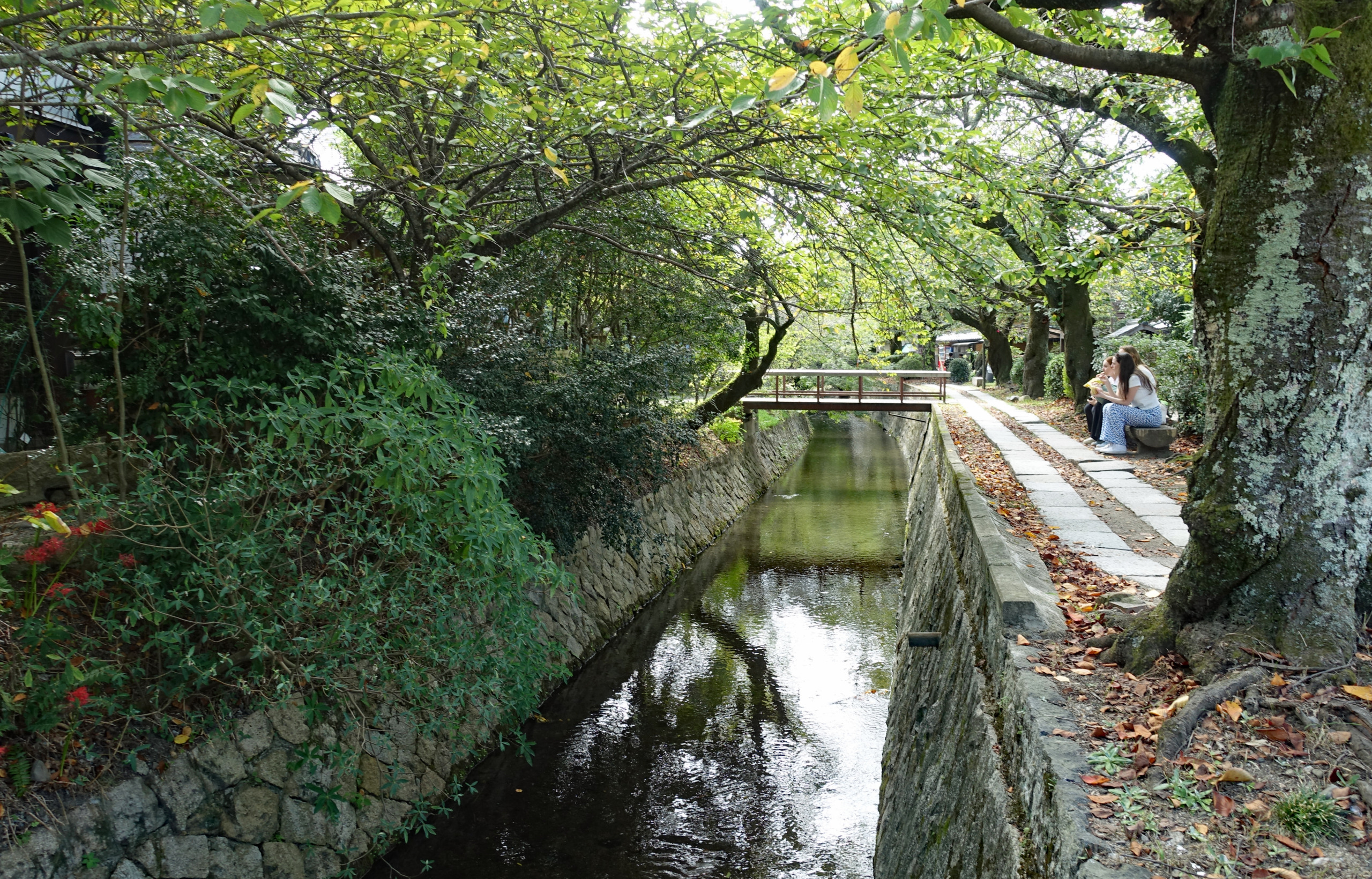
Honen-in Temple is a small independent Buddhist temple, dating from the 12th century, just a short detour from the Philosophers Path. Few tourists come here so the grounds were very peaceful. The most charming point is the moss covered thatched roof main gate and two sand art constructions just inside. These two patches of sand have been raised and compacted with designs etched on the top that vary by season. This temple is popular in the fall leaf viewing season. Straight on from the main gate there is a small pond crossed by a stone bridge leading to the main buildings, which are only open to the public once in spring and once in fall.
Our final stop on the bike tour was the Kyoto Imperial Palace, the Imperial family’s residence for over a thousand years, until 1868 when the emperor and capital were moved from Kyoto to Tokyo. The current palace was reconstructed in 1855 after it had burnt down and moved around town repeatedly over the centuries. Visitors can see the palace buildings and gardens, but none of the buildings can be entered.
The small figures often seen on top of traditional houses in Kyoto are called Shoki-san. They are typically small ceramic or clay figures, often depicted as a fearsome, bearded man holding a sword. Shoki-san are placed on the roof, usually above the entrance or on the eaves, as a talisman to ward off evil spirits, bad luck and disease. They are a specific, local custom, particularly associated with Kyoto’s traditional townhouses.
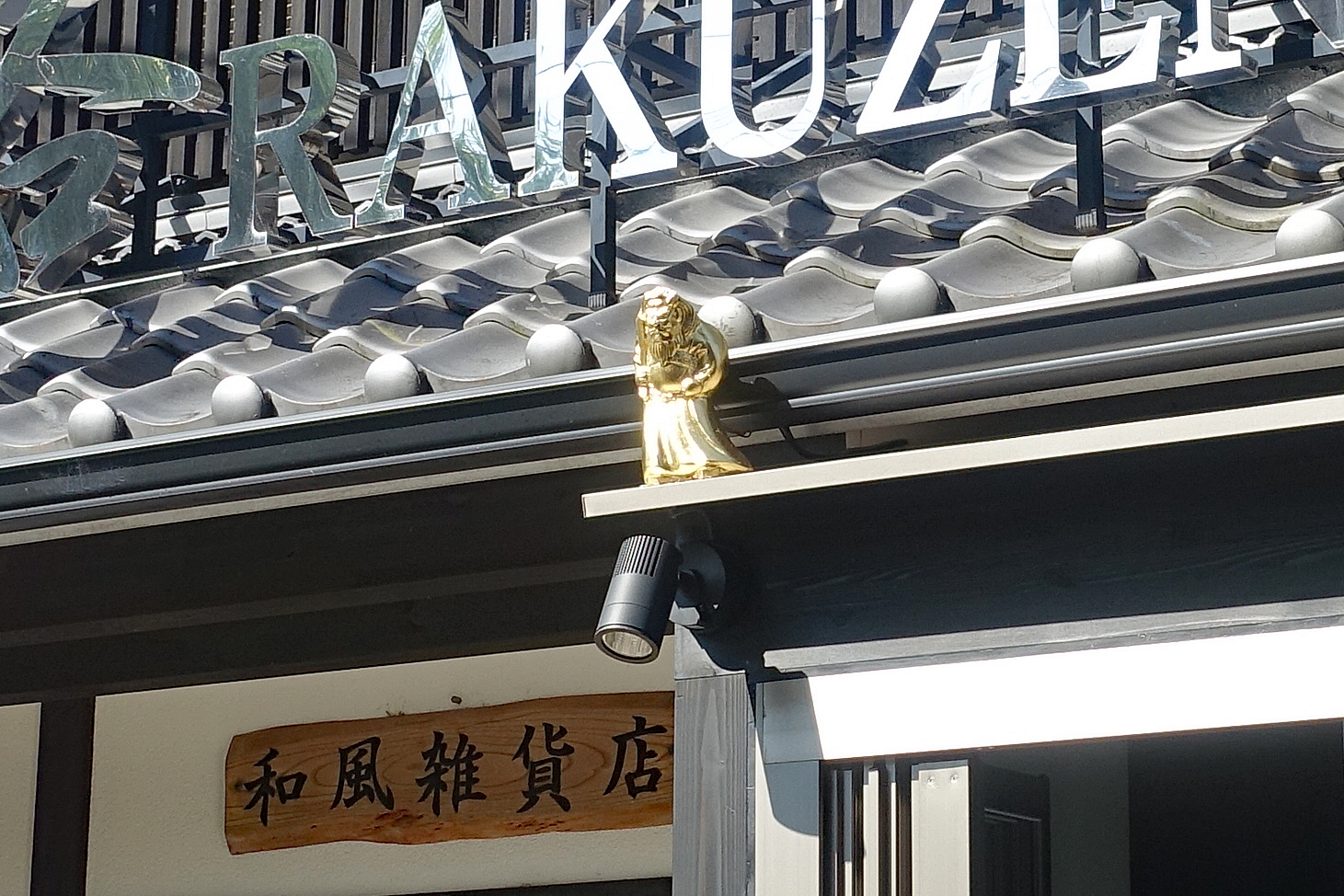
One more restaurant mention, we went to a nearby Okonomiyaki restaurant twice during our stay, the link is below. Okonomiyaki is a Japanese savory pancake dish consisting of wheat flour batter and other ingredients such as cabbage, meat and seafood cooked on a flat teppan griddle. This restaurant also made a teppan noodle dish that we loved. The food is cooked then delivered to the hot griddle in your table, so your food never gets cold. We celebrated our 33rd wedding anniversary here so we think its worth a try if you are in Japan!
We have really enjoyed our time in Kyoto, and did I mention it’s full of shrines and temples 😊 Because its one of the smaller cities in Japan, this has made it much more appealing to us. Even though there are a large number of tourists we were able to visit some of the popular sites at off times and between walking and our e-bike tour we got a good overview of the city center. Kyoto should definitely be on everyones list of places to visit in Japan.
Next up for us, a new city in a never before visited country. Taipei, Taiwan…..
TRIP TIPS
We reserved our bullet train tickets here and they cost USD 143.75 each for reserved seats, and reserved luggage space, in the Green Car. Super comfortable way to ride the train.
To get to Fushimi Inari Shrine we took the Keihan Main Line train to the Fushimi-Inari Station and from there it’s a short walk to the shrine. Our train tickets cost 440 Yen (USD $3) each round trip from the Kiyomizu-Gojo Station.
Our favorite restaurants were:
- Kaiten Sushi Ginza Onodera Kyoto-an upscale conveyor belt sushi restaurant, you order via a tablet
- ChaoCaho Gyoza-we did takeaway (lineups can be nutty here)
- Tendon Makino Kyoto Teramachi-for tempura
- Kiraku Kiyomizu Gojozaka-for okonomiyaki (we went here twice)
